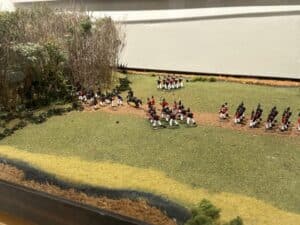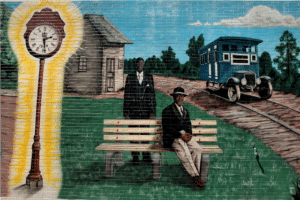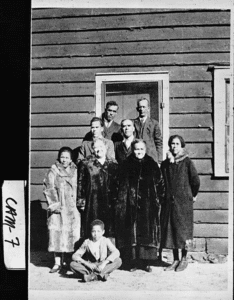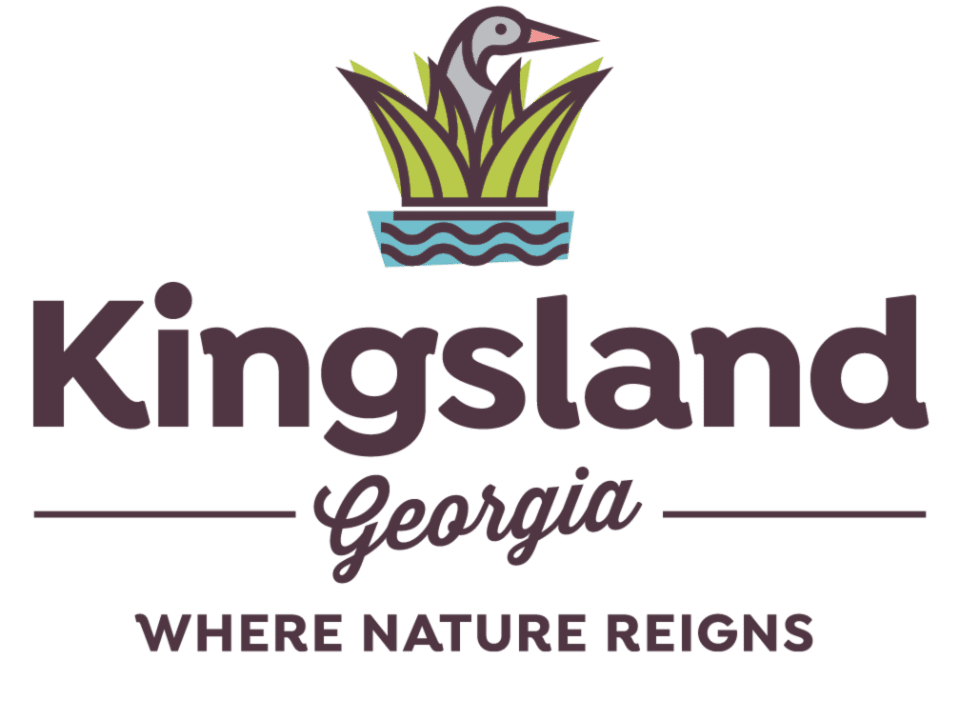
Point Peter: Discover Georgia’s Forgotten Battlefield of the War of 1812
Located in the southeastern corner of the state, Camden County played important roles during the War of 1812, serving as strategic points along the coastline
Cumberland Island, located about 15 miles southeast of Kingsland, is the largest public barrier island off the coast of Georgia. Accessible only by ferry, the Cumberland Island National Seashore (the name given to the area after being acquired by the National Parks Service in 1972) boasts many attractions, including wild horses, untouched beaches, and several historical sites associated with the long history of inhabitants of the island. Various groups have occupied the island over its 4000-year history, from the Timucoan tribe that first inhabited the island to the Spanish who built missions there and the British who later annexed the island from Spanish Florida and gave the island its name. While the island’s history is extensive, and many groups have had a lasting effect on its shores, the story would be incomplete without discussing the enduring impact and legacy of the enslaved Africans and African Americans who inhabited the island.
During the early years of the Transatlantic Slave Trade, from 1755 to 1798, it is estimated that over 6,000 African and Caribbean people were brought through the Port of Savannah and Coastal Georgia as part of the chattel slavery system. Many enslaved Africans were imported from present-day Senegal, Gambia, and Sierra Leone. While the ethnic and cultural mix of those captured and sold varied, the abducted often included people from the Fula, Igbo, Gola, Malinke, Bambara, and Serer tribes who resided on the continent’s Western Coast.
During the 19th Century, rice and cotton became essential crops in the Georgia Lowcountry. As the demand for enslaved African labor with rice-growing expertise increased from 1800-1865, over 13,000 Africans arrived from the “Rice Coast” and ”Grain Coast” (Senegal to the Ivory Coast) regions, bringing their sophisticated knowledge of rice and grain harvesting in both lowland and upland regions. This invaluable knowledge of rice cultivation under challenging conditions that enslaved Africans possessed contributed to Coastal Georgia becoming one of the major rice-producing areas of the period and greatly influenced the region’s demographic makeup. In fact, by 1860, over 500 enslaved people lived on the island, outnumbering white inhabitants by a ratio of seven to one.
A system of labor called the task labor system primarily governed the daily lives of enslaved Africans and African Americans in Coastal Georgia. Under the task labor system, the enslaved received a certain amount of work or “tasks” daily. Once the enslaved laborers completed the assigned tasks, they were then “allowed” to hire themselves out to neighboring plantations to earn money, tend livestock, or grow their own gardens. Often, these tasks were grueling, such as harvesting and hoeing rice in heavy rains, weather typical in the Lowcountry. These difficult working conditions sometimes resulted in spinal injuries from rice cultivation, pulmonary illness, rheumatism, foot rot caused by standing in high water levels, and even death. The enslaved were often beaten, whipped, and flogged with chains and irons.
So arduous was this system of task labor that many enslaved Africans dreamt of escaping the system and rebelled. One such incident occurred during the later years of the War of 1812. In 1815, British troops took over Cumberland Island and all its plantations, offering freedom to the enslaved by joining British forces or boarding British ships as free persons headed for British colonies. Over 1,500 formerly enslaved people who made it to Cumberland Island from across the Coastal region sought freedom by boarding British ships to Bermuda, Trinidad, and Halifax in Nova Scotia.
Throughout the TransAtlantic Slave Trade period in Georgia, lasting from 1750 until the end of the Civil War in 1865, Cumberland Island would have 15 plantations and small farms involved in its chattel slavery system. The largest and most famous plantation on the island, Stafford Plantation, held 348 subjugated Africans and African Americans working over 4200 acres of land at its height and spanned one-third of the island. In 1971, an archeological study was performed on Stafford Plantation to learn more about the daily lives of the enslaved there. Archeologists discovered that the enslaved workers on Stafford Plantation primarily raised sea cotton, which had become the main export of the plantation. According to documented oral narratives, the enslaved lived in one-room cabins, which stood at approximately 6 feet high and spanned 324 sq. ft. and often housed two families of about eight to ten people. The structures, arranged in two parallel rows in the “Slave Quarter,” were where the enslaved cooked, lived, slept, and ate. The enslaved Africans typically ate corn and sometimes pork rations provided by the plantation owner but often supplemented their meals with fish, wild animals, oysters, and clams for survival. Each cabin or “thatch roof hut” frequently had dirt floors with sides made of wood held to the earth by chimneys that often provided little heat. The enslaved Africans routinely used tabby, a durable construction material from substances common to the Lowcountry (sand, lime, and oyster shells), to construct the chimneys and fireplaces. Overall, the enslaved Africans on Stafford Plantation lived in eighteen cabin sites, with several chimney ruins still intact today after a fire destroyed the main structures shortly after the Civil War.
The indelible impact of enslaved Africans on Cumberland Island cannot be measured. From the wealth of the island’s past due to their unpaid labor that supported rice and cotton production to the treasured structures left on the island by their descendants (such as the enduring First African Baptist Church and The Settlement where their descendants lived and helped establish the island as a trendy destination for the uber-famous and wealthy in the late 19th and 20th centuries), the contributions of the enslaved Africans on Cumberland Island will be remembered for centuries to come.
References
Anderson, M. A. (2003, April 6). Cumberland Island. Gainesville Sun.
https://www.gainesville.com/story/news/2003/04/06/cumberland-island/31633794007/
Ascher, R., Fairbanks, C.H. Excavation of a Slave Cabin: Georgia, U.S.A.. Hist Arch 5, 3–17 (1971). https://doi.org/10.1007/BF03374451
Bell, K. B. (2010). Rice, Resistance, and Forced Transatlantic Communities: (Re)Envisioning the African Diaspora in Low Country Georgia, 1750-1800. Journal of African American History, 95(2), 157-182. doi:10.5323/jafriamerhist.95.2.0157
Bezemek, M. (2021). A Chance for Freedom. National Parks Conservation Association. https://www.npca.org/articles/2856-a-chance-for-freedom
Bullard, M. (2018). Cumberland Island. New Georgia Encyclopedia. https://www.georgiaencyclopedia.org/articles/geography-environment/cumberland-island/
Bullard, Mary R. (2010) “A Thatched Cabin on Cumberland Island, Georgia, “African Diaspora Archaeology Newsletter: Vol. 13: Iss. 3, Article 4.
Bynum, R. (2008). Disputed Tours Coming to Georgia Island Where JFK Jr. Married Retrieved from https://research.ebsco.com/linkprocessor/plink?id=6f84876d-5294-3d82-b965-7b89543b2bf8
Clark, Traci Eugenia. Falling to Pieces: The Preservation of Ruins in Coastal Georgia, Accessed August 28, 2023. https://getd.libs.uga.edu/pdfs/clark_traci_e_200612_mhp.pdf.
Colin Brooker. (2020). The Shell Builders : Tabby Architecture of Beaufort, South Carolina, and the Sea Islands. University of South Carolina Press.
Cornelius, J. D. (1999). Slave Missions and the Black Church in the Antebellum South. Columbia, S.C.: University of South Carolina Press.
Dilsaver, L. M. (2004). A Richness of Resources: Cumberland Island to 1880. In Cumberland Island National Seashore: A History of Conservation Conflict (pp. 8–85). essay, University of Virginia Press.
Dilsaver, L. M. (2009). Research Perspectives on National Parks. Geographical Review, 99(2), 268–278. http://www.jstor.org/stable/40377384
Garrison, J., Bryan, C., Roberts, H., & Admin. (2020, July 8). The Living History of Cumberland Island. Deep South Magazine. https://deepsouthmag.com/2013/06/12/the-living-history-of-cumberland-island/
Harakas, M. (1999, April 22). Preserving a Legacy. South Florida Sun-Sentinel. Retrieved August 29, 2023, from https://www.sun-sentinel.com/1999/04/22/preserving-a-legacy/.
Johnson, C., Dittrich, L., & Senator, J. (2008). Cumberland Island. Atlanta, 48(1), 98-99. Retrieved from https://research.ebsco.com/linkprocessor/plink?id=8ef8d4e3-dad5-3bfc-87c9-d5d3b1908c64
Karen, C. B. (2018). Claiming Freedom: Race, Kinship, and Land in Nineteenth-Century Georgia. Columbia, South Carolina: University of South Carolina Press. Retrieved from https://research.ebsco.com/linkprocessor/plink?id=4a4bcbb2-adc2-3881-a982-c5af76ba65c1
National Park Service. (2019). Cumberland Island National Seashore Cultural Landscapes (U.S. National Park Service). National Parks Service. https://www.nps.gov/articles/975727.htm#4/34.45/-98.53
National Park Service. (2023). Cumberland Island National Seashore–American Latino Heritage: A Discover our Shared Heritage Travel Itinerary. National Park Service. 2023. https://www.nps.gov/nr/travel/american_latino_heritage/cumberland_island_national_seashore.html#:~:text=By%20the%20Civil%20War%2C%20there,producing%20cotton%20on%20Cumberland%20Island
National Park Service. (n.d.). Georgia Historic Places. National Parks Service. https://www.nps.gov/nr/travel/geo-flor/16.htm
Singleton, T. A. (2010). Reclaiming the Gullah-Geechee Past: Archaeology of Slavery in Coastal Georgia. African American Life in the Georgia Lowcountry: The Atlantic World and the Gullah Geechee (pp. 151-187). University of Georgia Press.
Sublette, N., & Sublette, C. (2016). The American Slave Coast: A History of the Slave-Breeding Industry (First edition ed.). Chicago, Illinois: Lawrence Hill Books. Retrieved from https://research.ebsco.com/linkprocessor/plink?id=4cc0a296-ad07-302b-9cf2-079866da44e1
Tate, B. (2014). Cumberland Island Slave Narrative Comes to Stage. Retrieved from Points of View Reference Center; EBSCOhost Retrieved from https://research.ebsco.com/linkprocessor/plink?id=a908ebbd-2a5d-39b7-8c61-afa28c50b2e0
U.S. Department of the Interior. (2023). On Island. National Parks Service. https://www.nps.gov/cuis/planyourvisit/on-island.htm

Located in the southeastern corner of the state, Camden County played important roles during the War of 1812, serving as strategic points along the coastline

One influential family is the Joseph Family, led by Jacob Joseph, an African-American trailblazer who would help craft Kingsland’s religious and economic story for generations to come.

Early in her career, Harris traveled throughout the county to teach its African American citizens and served as its first home demonstration agent. Her service to educating local youth continued for 60 years.

"*" indicates required fields
By submitting this form, you are consenting to receive marketing emails from: Kingsland Visitors Bureau & Welcome Center, 1190 East Boone Avenue, I-95 Exit 3, Kingsland, GA 31548, US, https://kingslandcvb.wpengine.com
You can revoke your consent to receive emails at any time by using the SafeUnsubscribe® link, found at the bottom of every email. Emails are serviced by Constant Contact